IRAN's Biodiversity Information Management System BiodiversityDB  | ||||
 | ||||
| ||||
| ||||||||||
| You are here : Home > Museums > Fossils > What is a Fossil?
Introduction Fossils are the remains of creatures which existed long ago. Fossils range from thousands of years to many millions of years in age. The earliest fossils date from around 600 million years ago, however recent reports suggest bacteria may have existed up to 3 billion years earlier. To put this in context, the dinosaurs became extinct just 65 million years ago.
Not all former life was preserved as fossils, in fact the vast majority simply vanished without trace. The most likely materials to survive fossilisation are the hard parts such as shells and objects which in life were constructed from resistant materials, such as Coral. In order for softer materials to survive, the conditions must be extremely favourable. Fossils come in a variety of sizes, from minute traces to large skeletons. Trace fossils are clues to former life, they result from the activities or presence of creatures and plants. Examples of these traces include footprints, burrows and root tunnels. At the larger end of the scale, fossils also include bones, the largest of which belong to the dinosaurs, which existed between the Triassic and Cretaceous periods. The following diagrams illustrate the process of fossilisation, starting with the moment of death. The example used is an ammonite, a shelled creature that lived in the seas around 150 million years ago. (to learn more about Ammonites click here) Phase 1 - Death 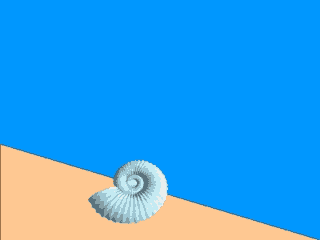 Having died, the ammonite slowly sinks to the sea floor. Scavengers feed on the fleshy body of the creature, and after only several weeks all that remains is the shell. Phase 2 - Deposition 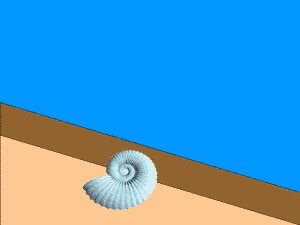 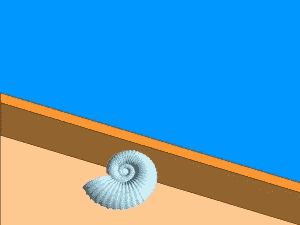 Several months after death the shell gradually becomes covered with silt and sand. These layers continue to build, providing a shield around the shell and protecting it from damage. Time continues to pass and more and more layers are deposited. After a few hundred years the shell is several feet beneath the surface.  Time continues to pass, 1,000 years, 10,000 years and more... Phase 3 - Permineralization 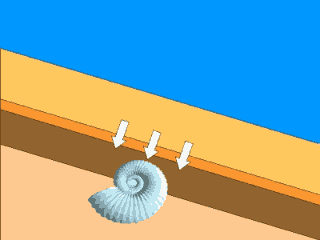 Gradually the chemicals in the shell undergo a series of changes. As the shell slowly decays, water infused with minerals passes through it, replacing the chemicals in the shell with rock-like minerals (Calcite, Iron or Silica). This process is scientifically known as 'permineralization'. 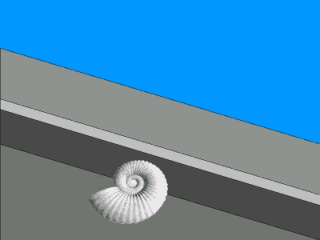 Over millions of years the original shell is completely replaced by the minerals and what remains is a rock-like copy of the original shell. The fossil has the same shape as the original object, but is actually rock. This process also results in loss of original colour. Phase 4 - Erosion 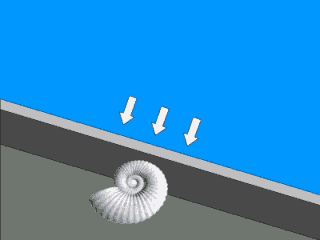 Over millions of years the movement of the earth plates results in the seabed being forced above the surface. The result is a new landscape, within which the ammonite fossil remains buried. Once above the surface the rock is subject to erosion. In certain areas of the world such as Lyme Regis in Dorset, the rock is once again subject to the affects of the sea. In these areas the rock is pounded by the sea, forming towering cliffs. Other factors such as wind, rain, ice and the sun help contribute to the rate of erosion. Phase 5 - Exposure  Having laid beneath the surface for 150 millions years the fossil is finally exposed. This final stage may have resulted from a cliff collapse or the efforts of a paleontologist. 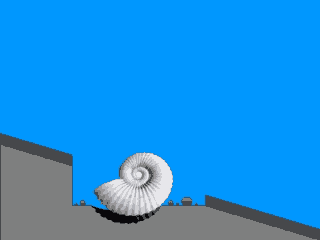 The fossil can then be removed from the ground, cleaned and examined. |
|